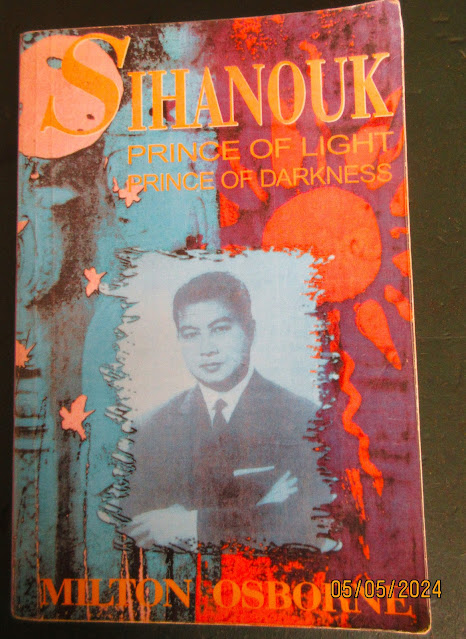The deceased estate of Australian Vietnam War veteran, Garry Silcock , 79 , of Townsville, contained a variety of war books and photo albums .
Silcock, shown here with his medals on Anzac Day, a signaller in the 6th Battalion Royal Australian Regiment , served twice in Vietnam . After the war, by trade a painter, he went back to help rebuild the country and also spent much time in Cambodia , Laos and Thailand .
He died in February , having earlier been found unconscious in the carpark of a Townsville hotel, where it was thought he had fallen or had collapsed.
However, in hospital it was found that he had been hit on the back of the head . Nobody was ever charged.
In his house there was a large Buddha at each end of a bookshelf which held war books ranging from the Boer War dispatches of Banjo Paterson to World War ll , several about Australians fighting in New Guinea and Tarakan, the Indochina conflict .
The above book covered the disappearance of American Vietnam War photo-journalists Sean Flynn ( son of Australian filmstar Errol Flynn) , and Dana Stone , who in April 1970 set off on motorbikes to cover the war. Last seen in Cambodia ,they were captured by Communist forces , never seen again , massive investigations made over the years .
While the book mentions that Errol Flynn had been in New Guinea early in his life, there was no mention that he supposedly won an interest in a Magnetic Island goldmine in a Townsville pub card game .
The goldmine became a tourist attraction , where you could go and inspect Errol Flynn's shaft . Wink, wink, nudge, nudge.
A Thai Airways boarding pass in Silcock's name for a flight from Bangkok to Brisbane was found inside the book .
By Peter Simon
The book brought back memories of former Darwin journalist Neil Sharman , 23, and American Charles Dean , 24 , who were captured and killed by Communist guerrillas in 1974 when backpacking through Southeast Asia .
While Neil was working on Darwin's Northern Territory News , he wrote to his brother in 1973 and told him he was taking time off to see the world- Indonesia, Malaysia,India and all places in between.
In addition , he said maybe the Arab countries ,"If we can without being shot."
Sharman had met Charles Dean when he came to Australia and worked on a sheep station . He was a member of a prominent American family which included the future Democratic National Commitee chairman Howard Dean, Democracy for America chairman, Jim Dean, and activist Bill Dean.
They were captured in Laos where Charles , an anti-war campaigner at university, planned to visit a family friend working in USAID.
Earlier in their travels they had been accompanied by Neil's girlfriend, Joy Hooper , another Darwin reporter, who was to meet up with them.
I knew both Neil Sharman , who had worked on the Sydney Morning Herald, and Joy Hooper. Joy desperately tried to find out what had happened to them.
She told me how she had approached people in high places in the region for help, including Prince Sihanouk of Cambodia, and showed me correspondence she had received.
The wife of missing photo-journalist Dana Stone , Loise, also had extensive correspondence with Prince Sihanouk, and had sought help from Australian journalist Wilfred Burchett , in Paris, who had reported on the Korean War and the Vietnam War from the Communist side , with contacts in Hanoi and Peking .
A book on Prince Sihanouk and several others on the brutal Pol Pot regime in Cambodia were in Silcock's collection.






